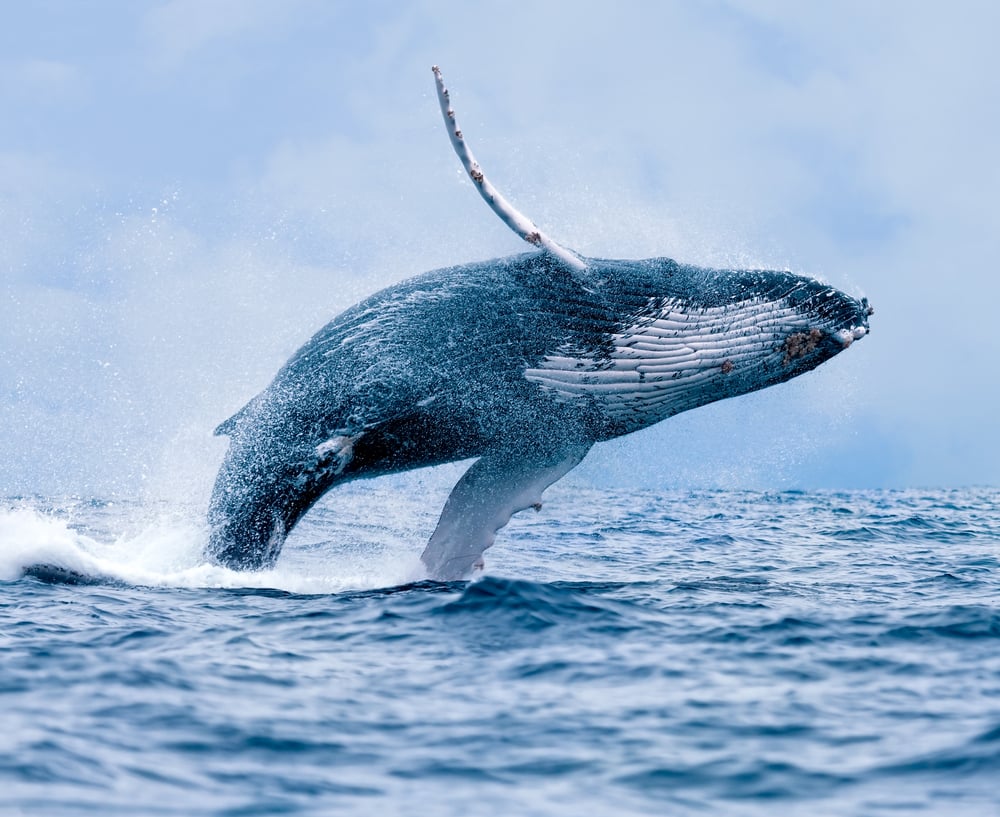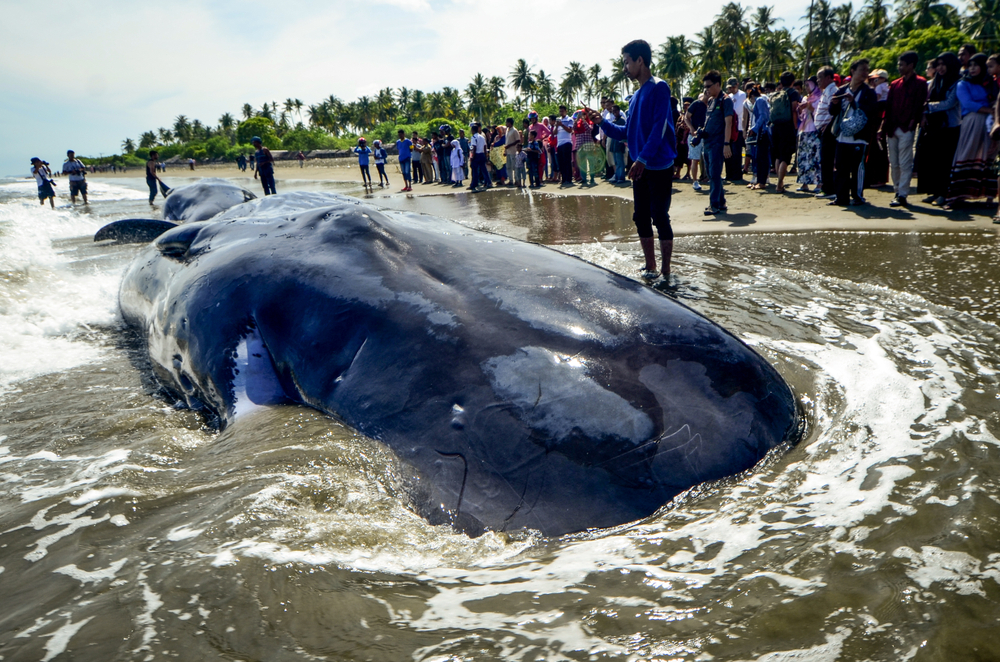A great deal of gas is produced by the decomposition of tissues in a dead whale. Its thick skin makes things more interesting, as it doesn’t let the gases escape, which leads to immense pressure building up inside the cadaver.
“What is the largest animal on Earth?”
“Blue Whale!”
All of us probably answered this question in unison when we were asked in 3rd grade. Years later, more complicated questions arise, and I find myself thinking about those mystical creatures.
More magnificent than any other beast, boasting a bodyweight equivalent to fifteen school buses, whales stand tall.
But why are whales so huge?

Recommended Video for you:
Why Are There No Land Animals As Heavy As Whales?
The heaviest animal on land is an elephant. To put this in perspective, one blue whale is equivalent to about 25 adult elephants. That is surprising to many people, and also makes us wonder why land animals can’t seem to get that heavy? In simple words, it’s because of gravity. Gravity curbs the height of most things, or else creatures would simply collapse in on themselves. In the case of animals and an excess of mass, their skeletal system will be unable to support their weight, and their movement would be greatly restricted if they were heavier. In that a case, why do whales get a pass? Because whales live in water. The buoyancy provided by water compensates for the pull of gravity and allows whales to behave normally and thrive.
Why Should We Stay Away From Dead Whales?
As we can see, whales are humongous, so just imagine their carcasses! When washed ashore, they certainly attract attention and inspection. Let’s imagine, for the sake of this article, that we’re best friends and have just arrived at the beach for vacation. Down at the shore, believe it or not, is a washed-up whale—the biggest creature on earth!

Both of us anxiously take out our iPhones to capture this phenomenal sight! However, as we get closer and closer for a good photograph, we would be wise to proceed with caution, as whale carcasses are… unpredictable. Basically, as the blood circulation and respiration stops in a dead whale, it leads to the decomposition of cells and tissues by the microbes already present in the body, which leads to the further proliferation of bacteria. This process produces pungent gases like methane, carbon dioxide and nitrogen, increasing the pressure inside the carcass, which in turn leads to the cadaver swelling up, like a massive dead balloon.
Now, under normal circumstances, these gases would make their way out through the orifices, such as the mouth or anus. However, it is believed that the whale’s own body weight seals all the orifices, leaving no way for the gases to escape.
Finally, let’s not forget about the whale’s blubber, which also plays a role. The thick fat under the whale’s skin makes matters even worse. Blubber isn’t porous and makes it nearly impossible for the gases to escape. The gases bloat the carcass more and more and eventually, once the threshold of pressure is passed… Whoooooooooosh!

An explosive rupture blasting chunks of flesh into the atmosphere at a speed of 70 kilometers per hour over 50 meters takes place. In fact, it can even be deadly.
Incidents Concerning Dead Whales
The most infamous incident occurred in Taiwan in 2004, where a whale carcass was being taken from shore to a laboratory for study when it suddenly exploded in the midst of a busy street, with the whale’s guts drenching the onlookers and shops—it was horrific!
Another incident happened in 1970 in Oregon, USA, happened when several officials wanted to disintegrate a whale with the help of dynamite. They thought that the leftover chunks would be taken care of by seagulls, but their scheme didn’t go as planned. Even though a military veteran advised them that the amount of dynamite was too great, people went along with the idea of blowing up the whale. Although they cleared nearly half a mile around the carcasses, chunks as huge as coffee tables still flew through the air, flattening cars nearly 2 miles away! Officials had to spend another week cleaning up all the mess, along with a huge part of the corpse that still remained unaffected.
Why Isn’t A Dead Gorilla As Dangerous As A Dead Whale?
This process of filling up with gas can happen to all creatures, but size has a role to play in this. The larger the creature, the more gas is released inside its body, so more pressure builds up, meaning there is a better chance of a whale exploding than a gorilla. Just for comparison, a whale weighs about 300-1000 times more than a gorilla.
If Whales Are So Heavy, Why Don’t They Sink?
Whales generally roam in deep waters due to their cold temperatures and high hydrostatic pressures, but sometimes, changes in tides, melting icebergs and dynamic food sources make whales relocate and wander off trajectory. When a whale dies and sinks, typically known as a whale fall, a complex localized ecosystem builds up around it. First, the sharks cut the whale into pieces to feed, and then the skeletal system serves as a food source for Osedax, a bone-eating genus of worms that secrete acids on the bones, thereby dissolving the fats and proteins. There are hundreds of different creatures—crabs, bacteria, shrimp, fish, worms—that benefit from the carcass of a dead whale at the bottom of the ocean. Believe it or not, this decomposition process can last for more than 3 decades!

Given that many whales are found washed up on shore, their floating can be attributed to the compositional gases that form in the carcass and their gigantic lungs filled with air. These factors make the whale buoyant and keep them floating, even after death!
So, if you ever come across a dead whale on the beach, it is best to keep your distance, as you never know what kind of pressure the carcass might be under, or whether the massive beast is close to bursting!












